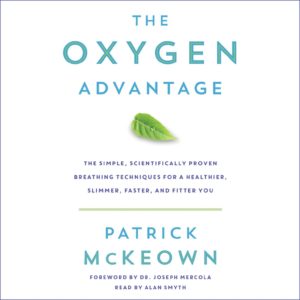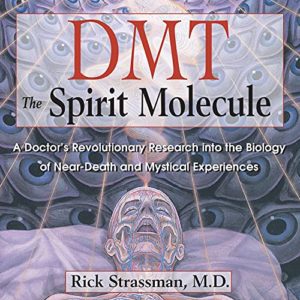So in the last part of this article, we talked about two different methods of breath work that can regulate either the “rest and digest (and think)” parasympathetic or the “fight or flight” sympathetic nervous system responses. Respectively accomplished by either the Butekyo / Oxygen Advantage or Wim Hof breath methods. If you are just joining us here, it might be helpful to look at the previous two articles here.
In this installment, I’ll go over quick tutorials on each method and offer criteria for judging their effectiveness for yourself. However, as this is just a simple introduction, I urge you to check out the sources themselves for more in depth instruction. They have really helped me.
• Rest and Digest: The Oxygen Advantage, Patrick McKeown, and Butekyo.
• Fight or Flight: Wim Hof’s website and Youtube Channel.
*Before doing these, if you have any underlying health issues, check with a doctor first. Also, listen to your body. If something hurts, stop and find find a teacher to help you troubleshoot what is going on.
Rest and Digest:
The first I’ll go over is the parasympathetic response breathing which is super simple but arguably the most important one to learn.
• Breathe in and out of only your nose.
• Breathe deeply using your diaphragm. To make sure you’re doing it correctly, place one hand on your belly and one on your chest. You should only feel the belly moving.
• Breathe lightly. You should not hear your own breath in and out of the nose. If you hear it, you are likely taking in too much air. Also you should only feel your belly moving a little bit.
Many people equate a deep breath with a high volume breath. This is not true. Deep indicates where in the lungs you are directing the air and is controlled by which muscles you are using to breathe. Volume is controlled by how much you move those muscles. We want to direct the breath into the lower lobes of the lungs which are bigger and have more surface area for gas exchange.
The goal here is to direct breath into the lower portion of the lungs but to not over-breathe. In his book The Oxygen Advantage, Patrick McKeown goes over all the ill effects of chronic over-breathing in much better detail than me, but the condensed version is chronic over-breathing results in a more stressed, unfocused, and unhealthier experience of life. To test this out, practice this method the next time you are stressed or having a hard time focusing and see if it doesn’t help take the edge off. The other benefits of this breathing is the air you take in gets cleaned, humidified, warmed, and sanitized and you don’t take in more air than is necessary (which can be pretty helpful when faced with the threat of nasty respiratory infectious diseases spreading around).
I have incorporated this type of deep, low volume nasal technique as my default way of breathing. It has taken some time and attention to do so but I feel that it has helped me regulate my stress and increase my physical performance, especially in conjunction with some of McKeown’s other breath exercises to simulate high altitude training. I highly encourage you to try this and check out his book and website to go deeper into this method.
Wim Hof Breathing
My go-to for stimulating my sympathetic nervous system response is the Wim Hof method.
• Take high volume breaths at a fast rate for a cycle of 30 breaths. I use nasal breathing for this but you can use mouth breathing to intensify the effects. You want to eliminate any pauses between breaths and focus the breath into your chest. The goal is to move as much air as possible.
• After the 30th exhale, hold your breath for as long as you can tolerate it.
• Once you are done with the breath hold, take a big recovery breath and hold it for 15 seconds.
• Then exhale and repeat up to 2 to 5 times.
• For further clarification, see this Youtube video.
It is important to do this while seated in case you get light headed and listen to your body. You may feel some tingling in the arms, warmness in your body, and a slightly euphoric feeling. Once you get acclimated to the method, you can test it out.
• Do as many pushups as you can while breathing normally, note the number. Rest for a minute or two.
• Then do a Wim Hof cycle or two and on the breath hold, do as many pushups as you can.
• Compare the numbers.
I’ve used this to get a boost in energy in the morning or before working out, warm up when I’m cold, and to keep a wasp sting from swelling up. It is wild but it works. I’ve also breath work similar to this to mobilize stuck myofascial tension in myself and my clients through the EERT breath work I learned from my SET teacher, Don McCann.
To summarize my own use of these breath methods, I try to spend as close as possible to 99% of my time breathing in the parasympathetic “rest and digest” methods outlined by Patrick McKeown and the Butekyo folks. In general, we should spend most of our time here as it helps us to maintain the internal balance that keeps us healthy and alive. However, I use the Wim Hof sympathetic nervous system activating breath method to exercise my fight or flight response, get a quick burst of energy, to minimize acute episodes of inflammation (such as a bee sting or if I have an injury), and to move stuck myofascial energy/tension in an SET Breath session. I think this mimics how our nervous system is supposed to work, rather than being constantly stuck in low-grade chronic stress that our current lifestyles can have a tendency to pull us into.
I hope this has been a useful guide to introducing you into the power of the breath. I encourage you to try these out for yourself and please, share the results with me. And if you know of any other useful breath techniques, please send them my way. I’m always looking for things to add to my own practice. Also if you have any questions or want to book a breath work session in person or online please do not hesitate to contact me.




